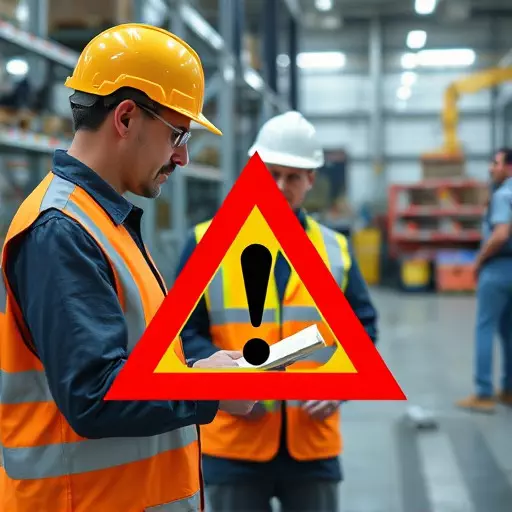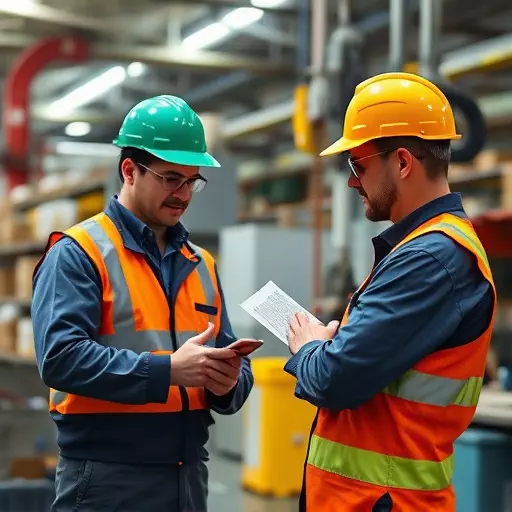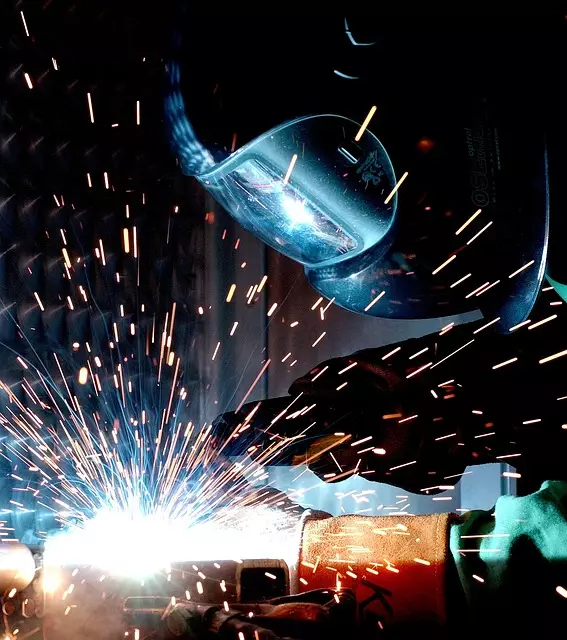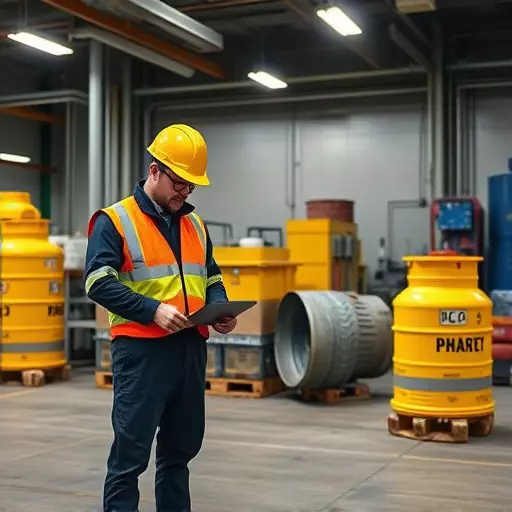Industrial hygiene consultants play a crucial role in ensuring the auditory health and safety of workers in industrial settings by regularly monitoring noise levels to adhere to occupational exposure limits (OELs) set forth by OSHA and NIOSH. These experts utilize advanced digital noise dosimeters that offer precise measurements and real-time data acquisition, enabling them to pinpoint high-risk areas within the workplace and implement targeted protective measures. Their work involves assessing noise frequency, peak sound pressure, and exposure duration to mitigate the risk of hearing loss and other auditory injuries. The use of sophisticated equipment and software for data analysis helps industrial hygiene consultants to effectively evaluate workplace hazards and develop hearing conservation programs tailored to each unique industrial environment, thereby safeguarding workers from noise-related harm and ensuring regulatory compliance. This proactive approach not only protects employees but also demonstrates an organization's dedication to their well-being.
- Understanding the Importance of Noise Level Monitoring in Industrial Settings
- The Role of Industrial Hygiene Consultants in Assessing Workplace Hazards
- Key Considerations for Occupational Exposure Limits and Regulations
- Strategies for Implementing Effective Noise Level Monitoring Systems
- Best Practices for Conducting Comprehensive Workplace Hazard Evaluations
- Technological Advancements in Noise Measurement and Their Impact on Occupational Safety
Understanding the Importance of Noise Level Monitoring in Industrial Settings

Industrial settings present a unique set of occupational hazards, where noise level monitoring is paramount for maintaining a safe and healthy work environment. High levels of ambient noise can lead to hearing loss and other auditory complications among workers, making continuous surveillance an integral aspect of industrial hygiene. Industrial hygiene consultants play a crucial role in this process by conducting thorough evaluations of workplace hazards, which includes assessing noise levels against established occupational exposure limits. These professionals utilize specialized equipment to measure decibel levels and identify areas within the facility where employees are at risk of excessive noise exposure. By adhering to these limits, as set forth by regulatory bodies such as the Occupational Safety and Health Administration (OSHA) or the National Institute for Occupational Safety and Health (NIOSH), industries can significantly reduce the risk of noise-induced hearing loss and enhance overall employee well-being. Regular monitoring and immediate intervention, where necessary, are essential to safeguard workers’ auditory health and ensure compliance with occupational safety standards.
The Role of Industrial Hygiene Consultants in Assessing Workplace Hazards

Industrial hygiene consultants play a pivotal role in safeguarding worker health by assessing and managing workplace hazards, including noise levels that exceed occupational exposure limits. These experts specialize in identifying potential risks within various environments, employing sophisticated monitoring tools to evaluate the noise level in real-time. Their comprehensive approach ensures that they not only measure the intensity of noise but also analyze its frequency and duration, which are critical factors in determining the potential for hearing damage. By adhering to established workplace hazard evaluation protocols, these consultants can pinpoint areas where employees might be at risk of noise-induced hearing loss, suggesting necessary interventions such as engineering controls, administrative measures, or personal protective equipment to mitigate these risks. Their work is essential in maintaining a safe and healthy working environment, aligning with the regulations and standards set by occupational safety and health agencies. In doing so, they help organizations comply with legal requirements while also fostering a culture of safety and well-being for all employees. Regular assessments conducted by industrial hygiene consultants are instrumental in preventing long-term health issues related to acoustic exposure, thereby enhancing overall workplace safety and productivity.
Key Considerations for Occupational Exposure Limits and Regulations

Occupational exposure limits (OELs) are critical in safeguarding workers from noise-induced hearing loss and other auditory injuries. These limits are established by regulatory bodies and serve as benchmarks for industrial hygiene consultants to assess workplace environments. Key considerations in this process involve the identification of noise sources, measurement of sound levels during various work shifts, and the application of appropriate protective measures. Industrial hygiene consultants play a pivotal role in evaluating hazards within the workplace, determining compliance with OELs, and advising on best practices for hearing conservation. They must consider factors such as the frequency of noise exposure, peak sound pressure levels, and the duration of exposure to ensure that workers are not subjected to harmful noise levels over permissible limits. Regular monitoring and risk assessments are essential to maintain a safe auditory environment, and compliance with these regulations is not only a legal obligation but also a moral imperative for employers. Workplace hazard evaluation by qualified professionals is indispensable in this regard, as it ensures that all occupational exposure limits are adhered to, thus protecting the health and safety of employees.
Strategies for Implementing Effective Noise Level Monitoring Systems

Best Practices for Conducting Comprehensive Workplace Hazard Evaluations

Regular and thorough workplace hazard evaluations are critical for maintaining a safe and healthy work environment. Industrial hygiene consultants play an instrumental role in this process, leveraging their expertise to assess various occupational exposure limits and potential risks associated with noise levels, chemical substances, and ergonomic factors. These professionals conduct systematic inspections, collecting data through direct observation, air sampling, and noise measurement using calibrated instruments. They compare these findings against established occupational exposure limits set forth by regulatory bodies such as the Occupational Safety and Health Administration (OSHA) or the National Institute for Occupational Safety and Health (NIOSH).
To ensure comprehensive evaluations, it is advisable to engage industrial hygiene consultants who follow best practices. These include a thorough review of safety programs, employee exposure records, and an analysis of the work processes and their potential health implications. Consultants should also involve employees in the evaluation process, as their on-the-ground insights can be invaluable. Additionally, consultants must document their findings meticulously and provide clear recommendations for risk mitigation. Regular reassessments are necessary due to changes in industrial practices, workforce composition, and new health and safety guidelines. By adhering to these best practices, companies can proactively address workplace hazards and protect the well-being of their employees, fostering a safer and more productive work environment.
Technological Advancements in Noise Measurement and Their Impact on Occupational Safety

Technological advancements in noise measurement have significantly enhanced the capabilities of industrial hygiene consultants in identifying and mitigating workplace hazards. The evolution from manual sound level meters to sophisticated digital noise dosimeters has streamlined the process of monitoring occupational noise exposure. These modern devices not only provide real-time data but also offer advanced features such as data logging, time-weighted average calculations, and integration with software systems for comprehensive analysis. This technological leap has allowed for more precise assessments of employees’ occupational exposure limits, enabling prompt interventions to prevent noise-induced hearing loss. The ability to accurately measure sound levels over an eight-hour shift or other time-weighted averages is crucial in ensuring compliance with workplace safety standards and regulations.
The impact of these technological advancements on occupational safety has been profound. They have empowered workplace hazard evaluation teams to perform their duties more effectively, leading to a better understanding of the risks associated with high noise levels. The data collected by these tools can inform the development of targeted hearing conservation programs tailored to the specific needs of each industrial setting. As a result, workers are better protected, and the long-term negative effects of occupational noise exposure are significantly reduced. This proactive approach not only aligns with safety regulations but also demonstrates a commitment to the health and well-being of the workforce, ensuring that every employee can perform their duties in a safe and secure environment.


